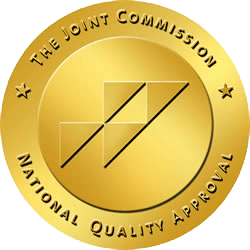Self-injury or self-harm is usually a response to severe emotional distress. A person may cause intentional, non-suicidal injuries to his or her body as a way to mirror psychological pain with emotional pain. In some cases, the physical injury can have a temporary calming effect and, in others, a self-inflicted wound is a way to “feel something” to deal with emotional numbness.
How Common is Self-Harm?
Self-harm is much more common than most people realize. Among teenagers, an estimated 15 percent will experience some form of self-harm. It drops to 4 percent among adults. The most common forms of self-injury include:
- Skin cutting 70% to 90%
- Headbanging or hitting 21% to 44%
- Flesh burning 15% to 35%
One reason for the lack of awareness around the condition of self-harm is that a person can easily hide or explain away their injuries.
What Are the Signs of Self Injury?
For family and friends, especially those who have loved ones suffering some type of mental illness, it’s important to watch for patterns and signs of self-injury which can include:
- Arms, legs or other parts of the body that show signs of repetitive injuries, such as scabs, bruises, burns and cuts
- Overdressing in warm weather, wearing, for example, coats, long sleeve shirts or pants
- Repeatedly making excuses for why or how they got injured
- Avoidance, isolation, and withdrawal from activities and relationships they previously had enjoyed
The overwhelming majority self-injury cases – some 90 percent – begin in adolescence. While the condition brings temporary relief for a person suffering, it carries a lot of shame and stigma.
How Can You Be Supportive?
When helping a person through the trauma of self-injury, it is important to listen, and not judge or act disgusted. You can stay supportive and proactive, drive him/her to a counselor’s appointment or visit him/her in treatment when appropriate. Take the opportunity to educate yourself about the condition as well as the underlying causes that often lead to these behaviors. Self-injury Awareness Month is a chance to set aside stigma, understand the problem and be open about recovery and mental health. Unfortunately, too many people will suffer needlessly because they’re afraid of being judged. Teenagers are especially vulnerable and often believe they’re the only ones in the world coping with these types of issues. With the right treatment and support, self-injury can be removed from a person’s life and appropriate ways to cope can be implemented. If you know anyone struggling with self-harm Destinations is here to help. You can contact our Admissions Department at (818) 737-2221 x 3260 for questions and support. Destinations provide premier teen treatment designed to support the whole family throughout the healing journey. Our goal is to service teens in need. We do so by providing compassionate, individualized pathways to obtaining therapeutic support and comprehensive educational services. We use various resources to ultimately achieve long-term, sustainable well-being. Destinations for Teens treat ages 12-17. Our three levels of care are residential, partial hospitalization and intensive outpatient in Topanga Canyon and Woodland Hills.


